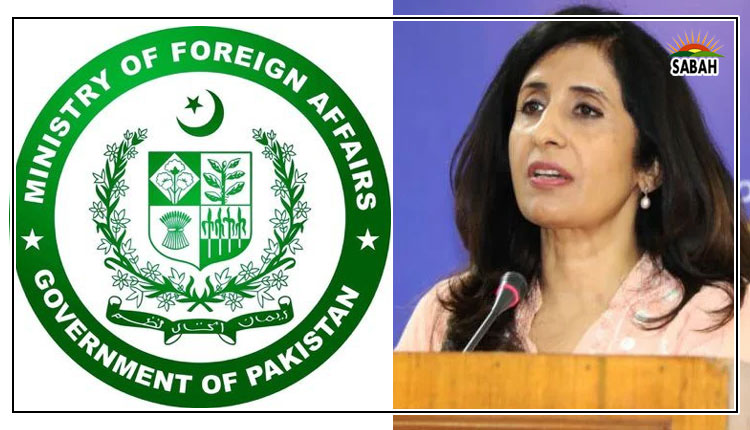China’s resilience … Dr Imran Khalid
In the economic data unveiled on September 9, China’s dynamic economic landscape displayed resilience and hints of recovery. Consumer prices, emblematic of the country’s economic vigor, rebounded into a positive terrain during August.
The slowing decline of factory-gate prices also added to this promising narrative, indicating a reduction in deflationary pressures, while pointing towards an overall stabilization of the economy. This uplifting development heralds the gradual alleviation of deflationary pressures, aligned with emerging signs of economic stabilization.
China’s National Bureau of Statistics reported a modest 0.1 per cent increase in the Consumer Price Index (CPI) for August compared to the previous year, slightly below the expected 0.2 per cent rise. This uptick follows a brief dip of 0.3 per cent in July. In August, non-food items such as air tickets, tourism products, and hotels continued to surge with double-digit price growth, extending the momentum seen in July, driven by heightened summer holiday spending.
The Core Consumer Price Index (CPI), excluding food and energy prices, maintained its stable course, showing a year-on-year increase of 0.8 per cent. This trend reflects a robust economic environment marked by strong consumer demand in key sectors. Meanwhile, the Producer Price Index (PPI) showed an anticipated but improved decline of 3.0 per cent compared to the prior year, following a steeper 4.4 per cent decrease in July. This downturn in factory prices stands as the most modest in five months, reinforcing China’s continuation on the track of balance and stability.
The shift from negative growth in the preceding month highlights China’s sustained consumer market recovery, fueled by an array of economic stimulus measures introduced after a major leadership meeting in July. As domestic demand continues to surge, a significant year-on-year uptick in domestic Consumer Price Index in the forthcoming months is anticipated in the coming months.
This robust performance defies Western assertions of a looming deflation crisis in China. It underscores China’s proactive approach in maintaining economic stability and reinforcing the narrative of a resilient and dynamic marketplace. The emphasis on following through with stimulus measures to invigorate consumption is gaining momentum.
In early August, China’s preeminent economic authority introduced an array of initiatives aimed at galvanizing spending across a broad spectrum of goods and services. These measures encompassed sectors like new-energy vehicles, household appliances, electronics, dining, culture, tourism, and rural development. The persistent softness in price data from the onset of the second quarter has triggered market apprehensions, with deflationary worries looming as a potential impediment to the nation’s economic resurgence. China’s proactive stance in addressing these concerns underscores its unwavering commitment to sustaining a robust recovery.
June witnessed a substantial dip in the Producer Price Index (PPI), marking its lowest point since 2016 with a notable 5.4 per cent decline. Analysts anticipate that, buoyed by ongoing stimulus measures and the advantageous low base effect from the same period last year, the year-on-year contraction in PPI will progressively diminish over the coming months. This trend promises to exert a favourable impact on enhancing the operational dynamics of enterprises and fostering a more robust production landscape. China’s August trade data revealed an encouraging trend: both exports and imports displayed reduced declines, in line with several indicators pointing to a potential economic stabilization.
Policymakers are actively working to stimulate demand and counter deflation. This progress reflects early signs of growth stability and is exemplified by the uptick in commodity prices observed in August. There are no substantial indicators pointing to China facing a deflation risk over the course of a full year. Deflation typically encompasses a decrease in money supply, prolonged price declines, and economic recession. The current temporary dip in prices in China should not be conflated with deflation.
Several factors contributed to the weak Consumer Price Index (CPI) in the past, including a challenging global environment, a sluggish world economy, inadequate domestic demand, and a relatively high comparison base from the previous year. However, these weaknesses are transient, and the measures enacted by China’s policymakers are yielding positive outcomes.
While this data is a testament to China’s economic resilience, the sustained policy support to fortify consumer demand in the world’s second-largest economy would be very crucial. Challenges such as a decelerating labour market recovery and uncertain household income prospects underline the need for continuous vigilance and strategic economic maneuvering. Nevertheless, China’s proactive response to these challenges remains a testament to its enduring economic prowess and unwavering commitment to its citizens’ welfare. However, despite headwinds such as the negative growth in real estate investment and persistently sluggish private investment, the domestic upstream industrial sector anticipates a tepid recovery.
Fortunately, beyond the realm of exports, there are no alarming indicators signaling a significant decline in demand. While income growth has decelerated, it hasn’t contracted. Consumer demand is rebounding after a lackluster period, primarily in the realm of domestic services and tourism, as evidenced by the substantial surge in holiday prices over the past two months. To reinvigorate private sector spending and investment, Beijing could adopt a more assertive policy easing approach in the forthcoming months, with a focus on stabilizing the property market and restoring public confidence.
Acting promptly and decisively is paramount to mitigate the current pessimism that threatens to entrench itself and weigh more heavily on growth. Nevertheless, considering Beijing’s commitment to bolstering the economy and reducing systemic debt, it is improbable that China will tumble into a debt-deflation spiral. While post-Covid economic recovery remains fragile, we perceive the challenges as predominantly cyclical, and they can be effectively addressed through a more robust fiscal expansion complemented by judicious monetary easing.
The writer is a freelance contributor.
Courtesy The News












